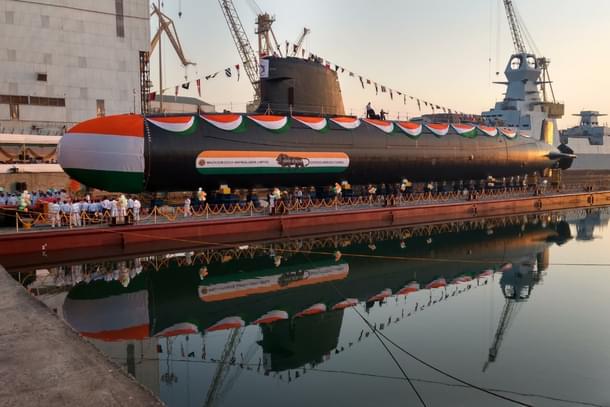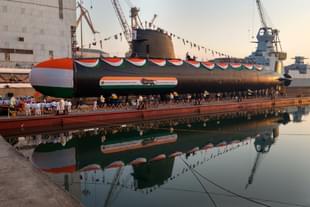News Brief
India's Fourth Nuclear-Missile Submarine With 75 Per Cent Indigenous Content Launched—Here's All About It
Nishtha Anushree
Oct 22, 2024, 10:06 AM | Updated Oct 25, 2024, 04:22 PM IST
Save & read from anywhere!
Bookmark stories for easy access on any device or the Swarajya app.


India quietly launched its fourth nuclear-powered ballistic missile submarine (SSBN) this week at the Ship Building Center (SBC) in Visakhapatnam, enhancing its nuclear deterrence capabilities.
This launch follows the commissioning of the second SSBN, INS Arighat, by Defence Minister Rajnath Singh on 29 August 2024. The third SSBN, INS Aridhaman, is slated for commissioning next year.
On 9 October, the Cabinet Committee on Security (CCS) approved the construction of two more nuclear-powered attack submarines to bolster India’s presence in the Indo-Pacific.
Although the Modi government has been discreet about its nuclear deterrence strategy, the fourth SSBN, codenamed S4*, was launched on 16 October, just a day after Defence Minister Singh inaugurated a Very Low Frequency Naval Station in Vikarabad, Telangana, designed for communication with the Indian Navy’s strategic assets.
The newly launched S4* submarine boasts nearly 75 per cent indigenous content and is equipped with K-4 ballistic missiles, which have a range of 3,500 km and are fired through vertical launching systems.
While the first SSBN, INS Arihant, carries K-15 nuclear missiles with a range of 750 km, the successors, including S4*, are equipped exclusively with K-4 missiles. These submarines have virtually unlimited range and endurance, with operational limits being defined only by food supplies, crew fatigue, and maintenance needs.
INS Arihant and INS Arighat are already on deep-sea patrols, and India is set to receive a Russian Akula-class nuclear-powered attack submarine on lease by 2028. In parallel, the sixth diesel-electric Kalvari-class submarine, INS Vagsheer, is expected to be commissioned in December this year.
India’s SSBNs are critical to its strategy against adversaries like China, as aircraft carriers are increasingly vulnerable to Chinese long-range missiles such as the Dong Feng-21 and Dong Feng-26. Consequently, the government has prioritised nuclear submarines over the Indian Navy’s third aircraft carrier.
Additionally, plans are underway for the construction of three advanced diesel attack submarines in collaboration with the French Naval Group, aiming to strengthen India’s defense in the Indian Ocean Region (IOR) as PLA warships patrol the area with increasing frequency.
Nishtha Anushree is Senior Sub-editor at Swarajya. She tweets at @nishthaanushree.





